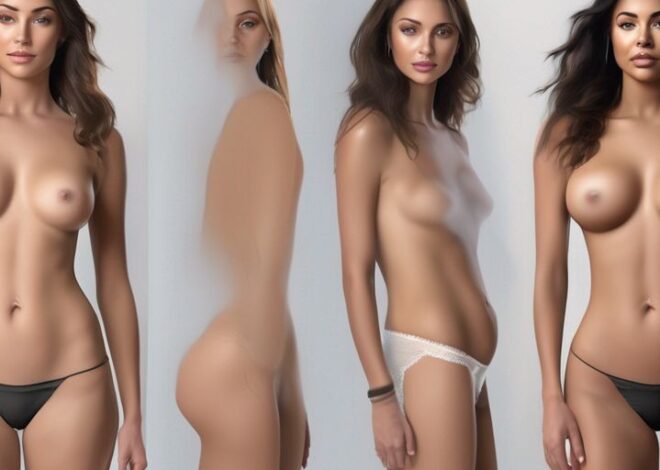
Unveiling Undress.ai: Innovations and Concerns in Digital Decency
The advent of Undress.ai, a sophisticated web-application powered by the latest AI technology of 2024, has sparked a significant discussion around the implications and innovations of digital decency. This tool, capable of digitally removing clothes from images, presents a series of technological advances and ethical concerns that necessitate thorough exploration.
Key Takeaways
- Undress.ai leverages state-of-the-art AI algorithms to digitally remove clothing from images, raising both interest and concern.
- The technology poses significant privacy risks and legal challenges, highlighting the need for robust safeguards and regulations.
- Undress.ai’s real-time processing and advanced image manipulation capabilities set it apart from traditional photo editing tools.
- The application influences social norms and digital content consumption, potentially altering public perceptions of decency and privacy.
- Despite its innovative approach, the potential for misuse of such technology underscores the importance of ethical considerations in AI development.
Overview of Undress.ai

What is Undress.ai?
Undress.ai is a groundbreaking technology that allows users to digitally remove clothing from images. This tool is primarily used for artistic and educational purposes, providing a new way to interact with digital content. Undress.ai empowers users to explore and interact with clothing in a whole new way.
The Technology Behind Undress.ai
The core of Undress.ai is built on sophisticated AI algorithms that analyze and interpret the images uploaded by users. This technology carefully distinguishes between the clothing and the human body, ensuring accurate and realistic results.
Applications of Undress.ai
Undress.ai has a variety of applications ranging from fashion design to online retail. It allows designers to showcase their clothing in a unique manner and helps online shoppers to visualize how clothes might look on them without physically trying them on. Notably, Nudify.Online utilizes similar technology, enhancing user experience in the digital fashion domain.
Ethical Implications of Undress.ai

Privacy Concerns
Undress.ai raises significant privacy concerns as it allows users to digitally alter images in ways that could compromise personal privacy. The potential misuse of such technology to create inappropriate or non-consensual content is alarming. Key issues include unauthorized use of personal images and the ease with which digital content can be manipulated.
Legal Considerations
The legal landscape surrounding technologies like Undress.ai is complex and still evolving. There are questions about legality in terms of copyright, consent, and distribution of digitally altered content. Regulations may need to be updated to better address the challenges posed by AI-driven technologies that can significantly alter digital media.
Moral Dilemmas
Moral worries encompassing man-made intelligence improvement include:
- Inclination and Decency: AI frameworks can acquire biases from the data they are trained on, leading to ethical concerns about fairness and decency. The use of Undress.ai could potentially amplify these issues, making it crucial to consider the ethical implications of its deployment.
Technological Innovations in Undress.ai

Advancements in AI Algorithms
Undress.ai leverages cutting-edge AI algorithms to perform its core functionality. The system uses deep learning models that have been trained on vast datasets to accurately interpret and modify images. This allows for a high level of precision in image manipulation, setting a new standard in the field.
Image Processing Capabilities
The platform’s robust image processing capabilities enable it to handle complex scenarios with ease. It can effectively manage various lighting conditions, multiple layers of clothing, and different body types, ensuring a seamless user experience.
Real-time Processing
One of the most significant innovations of Undress.ai is its ability to process images in real-time. Users can see the effects of the AI almost instantaneously, which is crucial for applications that require quick turnaround times. This feature not only enhances user satisfaction but also broadens the potential use cases for the technology.
User Interaction and Interface

Ease of Use
Undress.ai has been designed with a user-centric approach, ensuring that even those with minimal technical skills can navigate and utilize the platform effectively. The interface is intuitive, with clear labels and a straightforward workflow that guides users through the process of image editing.
User Feedback Mechanisms
Feedback from users is crucial for the continuous improvement of Undress.ai. The platform includes various mechanisms for users to report issues, suggest enhancements, and provide general feedback. This input is regularly reviewed and often leads to direct updates and improvements.
Customization Features
Undress.ai offers extensive customization options, allowing users to adjust settings to meet their specific needs. From adjusting the intensity of the AI’s editing features to selecting different output formats, the platform provides flexibility to cater to a diverse user base.
Impact on Society

Influence on Social Norms
Undress.ai, like similar technologies, has the potential to reshape social norms around privacy and body image. As the technology becomes more mainstream, it may lead to a desensitization towards personal images and an altered perception of consent in digital interactions.
Potential for Misuse
The ease of access to tools like Undress.ai significantly increases the risk of misuse. Unauthorized use of personal images to generate inappropriate content can lead to severe personal and societal consequences. Effective regulatory measures are crucial to mitigate these risks.
Changes in Digital Content Consumption
The advent of technologies like Undress.ai is likely to change how digital content is consumed. There could be a shift towards more personalized and potentially invasive content, which could affect user behavior and expectations about privacy and digital interaction.
Comparative Analysis with Similar Technologies

Comparison with Traditional Photo Editing Tools
Traditional photo editing tools have long been used for a variety of image manipulation tasks, including altering clothing in images. However, Undress.ai leverages specific AI algorithms designed to automate and refine this process, making it significantly more efficient and accurate. This specialization allows for a more seamless integration of clothing manipulation in real-time applications, unlike traditional tools which require manual effort and expertise.
How Undress.ai Stands Out
Undress.ai differentiates itself by focusing solely on the aspect of clothing manipulation using AI. This niche focus has allowed for advancements in speed and accuracy that are not typically seen in general photo editing software. The platform’s ability to process images in real-time is a testament to its robust backend infrastructure and optimized AI models.
Competitive Landscape
The competitive landscape for technologies similar to Undress.ai includes various platforms like Nudify.Online. These competitors also utilize AI to manipulate images but often vary in terms of functionality, user interface, and processing capabilities. Here is a brief comparison:
- Undress.ai: Real-time processing, high accuracy, user-friendly interface.
- Nudify.Online: Similar AI technology, but less focus on real-time capabilities.
Undress.ai’s approach to digital decency through AI-driven clothing manipulation sets a new standard in the field, pushing the boundaries of what is possible with image processing technology.
Conclusion
In the exploration of Undress.ai, we’ve delved into both the technological advancements and the ethical quandaries presented by such digital tools. While the capabilities of AI like Nudify.Online to digitally alter images in profound ways are impressive, they also raise significant concerns about privacy, consent, and the potential for misuse. As we advance further into the digital age, it is crucial that innovation is matched with stringent ethical standards and robust legal frameworks to ensure that technology enhances societal values without compromising individual rights. The journey of Undress.ai underscores the need for a balanced approach in the evolution of digital decency.
Frequently Asked Questions
What is Undress.ai?
Undress.ai is a web-application that utilizes advanced artificial intelligence technology to digitally remove clothes from images of people, providing a simulated ‘undressed’ effect.
How does Undress.ai work?
Undress.ai uses sophisticated AI algorithms trained on vast datasets to recognize clothing in images and digitally erase them, replacing them with a realistic simulation of what might lie beneath.
Is using Undress.ai legal?
The legality of using Undress.ai can vary by jurisdiction. It’s essential to consult local laws and regulations regarding digital content and privacy before using such technology.
What are the primary concerns with Undress.ai?
Primary concerns include privacy violations, potential misuse for creating inappropriate content, and ethical issues surrounding consent and digital manipulation.
Can Undress.ai be used in real-time applications?
Yes, advancements in AI have enabled Undress.ai to process images in real-time, allowing for its integration into live-streaming or video applications.
How does Undress.ai differ from traditional photo editing tools?
Unlike traditional photo editing tools that require manual input, Undress.ai automates the process using AI, making it faster and potentially more realistic but also raising unique ethical and privacy issues.



